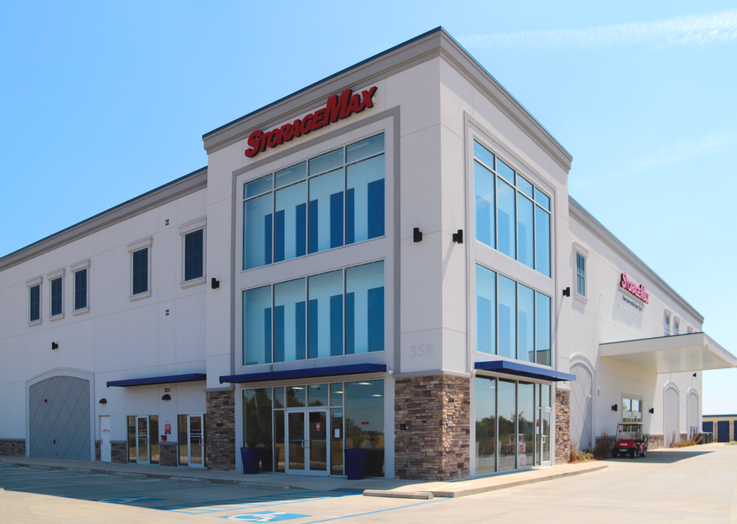Are Aggressive ECRIs Leading To Lower NOI, Higher Customer Churn?
Go to any self-storage event or attend any self-storage call these days, and the conversation inevitably circles back to existing customer rate increases (ECRIs). Why is the topic weighing so heavily on the minds of operators? After all, ECRIs are nothing new. Insurance, telecommunications, and subscription-based services have been using them for decades, and for the most part, unless a customer was willing to switch providers and cancel services, they just put up with ECRIs. In self-storage, this may be even more prevalent, as people often have a tendency to choose convenience over cost (how many customers are willing to pack up their unit, potentially rent a moving truck, and schlep everything to another facility?)
Recently, though, operators have been employing new ECRI strategies, attracting customers with low introductory rates and raising them aggressively, often without prior notice, within months of move-in. It’s a troubling trend because while low move-in rates have always been common, they were obviously promotional prices that wouldn’t last (no reasonable person expects anything but the first month to be $1). But, luring a customer in at $100 a month, which may seem reasonable to someone with no comparison anchor, and raising rates throughout the year until their paying $220 a month can be seen as deceptive, or a bait and switch. MSM recently covered this in a three-part series that I encourage you to read.
I monitor the ECRIs of operators in the industry closely and I’m starting to grow a little bit concerned myself – not just about the perception of the industry when aggressive rate tactics are employed, but as it pertains to net rent and customer value over time. To explain further, first we’ll need to take a look at what I’m seeing play out with a number of operators.
$100 web rate/$200 in-store rate; 30% increase every 4 months for a year.

After that first year, the third ECRI kicks in, pushing monthly rental rates up to $220. None of this is a hard and fast rule – sometimes that initial increase is pushed back to six months, for example – but for the purpose of this exercise, that’s the strategy we’re going to run with.
As the chart shows, $1,596 is collected from customers who stay one year — a 33.5% discount from the $2,400 in-store rate.
The story doesn’t end there, of course; there’s churn that needs to be factored in. History tells us that about 30% of customers will leave within six months of renting, and another 20% will leave within 12. None of these customers are hitting the higher rate levels, so they’re making off with a hefty discount.
It’s tempting to think that because the other 50% of customers who stay wind up paying $220 per month, you’re recapturing some of the loss from the early move-outs. In theory, it makes sense. However, when doing these calculations, something else jumped out at me.
As already mentioned, we can expect approximately 50% annual customer turnover. So, on a stabilized facility, 50% of tenants have been there for two or more years, and maybe about 25% of them turn over every year or two. As the oldest customers, they’re typically the highest-paying ones. This is especially true in our current cycle, given that many are still paying 2021 rates (for operators using aggressive ECRI strategies, there’s often a huge spread between the “seasoned” customers and those under two years; we’re not seeing this as much with independents in tertiary markets).
But this cycle is coming to an end, and as the mix of older, higher-paying customers and newer, lower-paying customers vacate every month, they’re only being replaced with very low rent customers.
The net rent/occupancy square footage seen on the Investor Relations pages of the REIT’s supplemental financials are only slightly reflective of the low-rent customers replacing vacates because you have to consider the rest of the rent roll, and churning through Covid-era renters will take time. But, once those high-paying customers are out of the equation, I think the industry will be headed in a concerning direction. While ECRIs are a fine strategy – as mentioned, they’ve been around for a long time and have served the industry well – overly aggressive ECRIs becoming the norm may be damaging. In time, they will leave facilities with only the lower-rent paying customers. There will be no seasoned “whales” to make up the difference.
Not only will net rent be hurting, but should churn rates increase further due to ECRIs, things could get even worse with NOI. It costs more to bring in new customers than it does to retain old ones, so customer acquisition costs go up; just take a look at REIT marketing expenses. And, millions of customers who feel they’re being subjected to unfair rent increases talk, leading to a negative industry perception. All of this without even considering the potential regulatory and legal risks that come with non-transparent pricing.
Furthermore, much of the pricing is highly volatile and derived from algorithms that are constantly A/B tested by robust data science teams. It’s inarguable that this is a strategy worth exploring as shareholders pay close attention to quarterly revenue and occupancy trends while comparing one REIT to the next. However, the dependency on algorithms presents a difficult challenge to analysts, developers, and acquisitions persons seeking an accurate figure for their forecasts. Rental rates for a single unit can see 30-50% volatility within a week.
While it does seem like achieved rates haven’t moved much for the REITs just yet – which is remarkable and a testament to their ability to push the envelope – it’s still a bit too early to conclusively state the impact of ECRIs. With the Q2 earnings rolling in soon, we may start to see how they’re affecting things. If it does seem like the model is here to stay, it’s very important for other operators to understand exactly how to process these ECRIs consistently in order to compete for customers without damaging their annual returns.
*Note: While figuring market rental rate comparison volatility/accuracy was a challenge, don’t see the need to split web/in-store rates 50/50 to pull together an acceptable comp, since web rates tend to balance out with in-store rates over time.
–
Armand Aghadjanians joined RHW Capital as their Director of Acquisitions in 2019. RHW Capital operates Store Here Self Storage and has been recognized as a top operator for the past decade, with experience in over 80 markets across the country. Prior to joining RHW Capital, Armand was a commercial real estate broker for five years, advising office and retail clients with dozens of sales and leasing assignments throughout Los Angeles.
More from Armand on MSM: Dynamics of Self-Storage Resiliency: History of Supply and Demand
More Content
Popular Posts
Recent Posts
When Germantown High School in Gluckstadt,...
It’s comforting to know that no matter how...
A very wise self-storage expert once said...
Senate Bill 709 (SB709) has many in the...
In January, self-storage industry veteran...
In April 1984, the first non-stop commercial...
Raise your hand if you’ve ever made plans,...
Everyone knows it: Investing in real estate...












